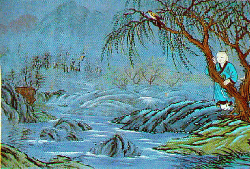|
|
"The Hermetic/Neoplatonic myth tells how, from the time of original Chaos,
Divine Light (Soul) has been attracted
by the Subtle Spirit, Nature, down into the dark Abyss, from whence it is
released only by dissolution or death.
In the words of the Greek Neoplatonist, Porphyry, it is the "urge for pleasure"
- the urge to "follow and obey their
worst parts, which draws souls down into the "witches brew of generation"
- Porphyry. On the Cave of the Nymphs, (written 3AD), in Lamberton, R.(Trans.).
New York, Station Hill
Press, 1983, pp.9-10.
- Regeneration in Remains of Elmet1
by Ann Skea
first published in The challenge of Ted Hughes |























 Arachnophilia
Arachnophilia